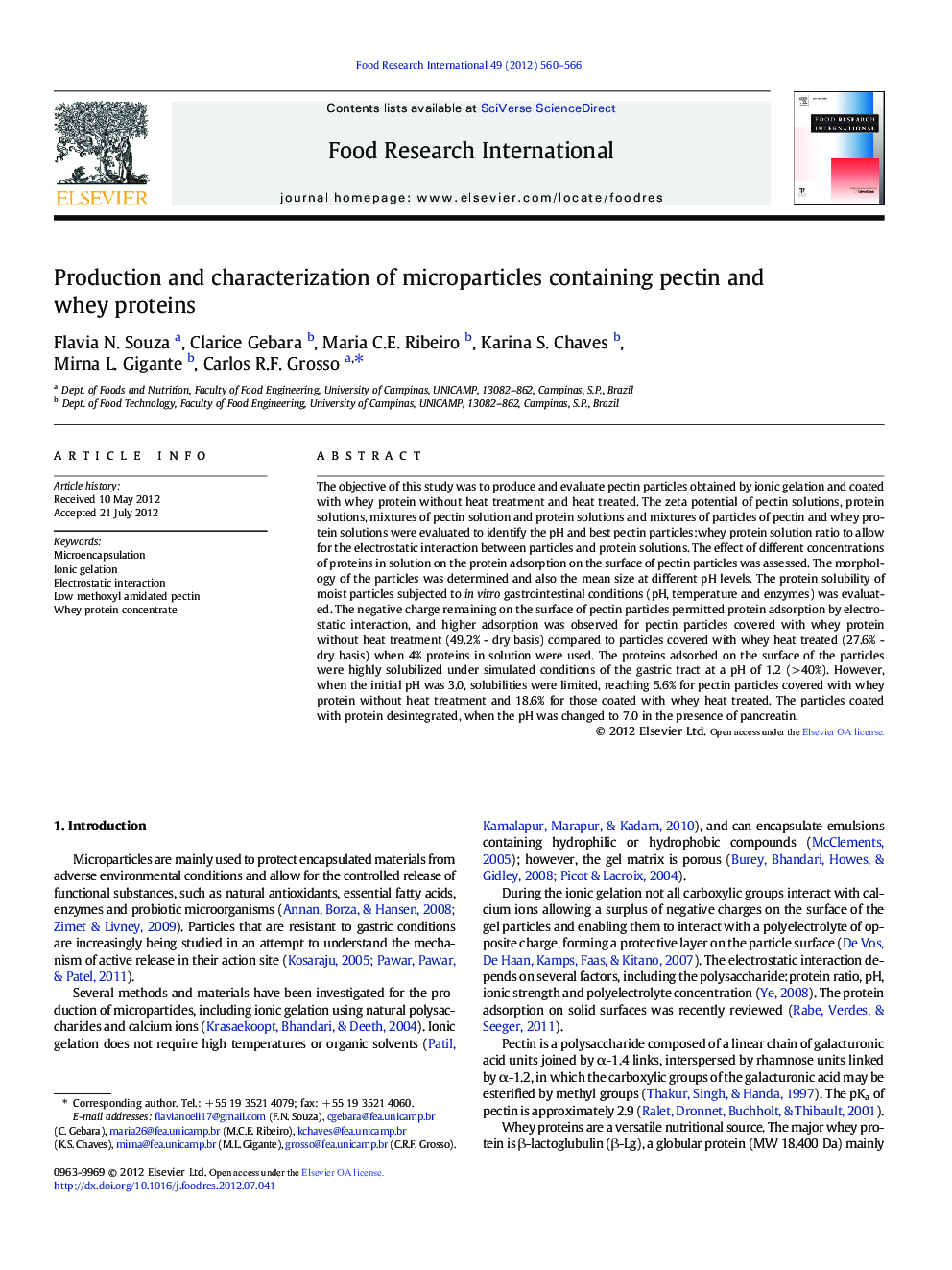| Article ID | Journal | Published Year | Pages | File Type |
|---|---|---|---|---|
| 6399200 | Food Research International | 2012 | 7 Pages |
The objective of this study was to produce and evaluate pectin particles obtained by ionic gelation and coated with whey protein without heat treatment and heat treated. The zeta potential of pectin solutions, protein solutions, mixtures of pectin solution and protein solutions and mixtures of particles of pectin and whey protein solutions were evaluated to identify the pH and best pectin particles:whey protein solution ratio to allow for the electrostatic interaction between particles and protein solutions. The effect of different concentrations of proteins in solution on the protein adsorption on the surface of pectin particles was assessed. The morphology of the particles was determined and also the mean size at different pH levels. The protein solubility of moist particles subjected to in vitro gastrointestinal conditions (pH, temperature and enzymes) was evaluated. The negative charge remaining on the surface of pectin particles permitted protein adsorption by electrostatic interaction, and higher adsorption was observed for pectin particles covered with whey protein without heat treatment (49.2% - dry basis) compared to particles covered with whey heat treated (27.6% - dry basis) when 4% proteins in solution were used. The proteins adsorbed on the surface of the particles were highly solubilized under simulated conditions of the gastric tract at a pH of 1.2 (>Â 40%). However, when the initial pH was 3.0, solubilities were limited, reaching 5.6% for pectin particles covered with whey protein without heat treatment and 18.6% for those coated with whey heat treated. The particles coated with protein desintegrated, when the pH was changed to 7.0 in the presence of pancreatin.
⺠Pectin particles were coated with whey protein with or without heat treatment. ⺠A high protein adsorption was observed for whey protein without heat treatment. ⺠The proteins adsorbed were highly solubilized at pH 1.2 plus pepsin (> 40%). ⺠The particles desintegrated, when the pH was changed to 7.0 plus pancreatin.
